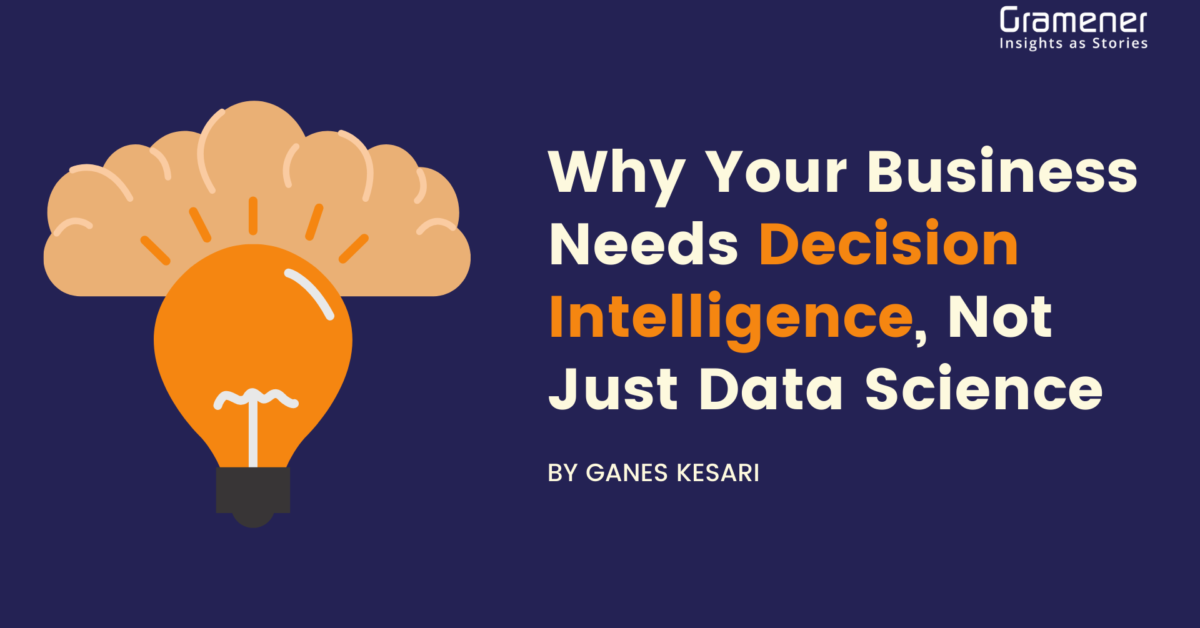Covid-19 pushed companies around the world to the brink. They were forced to improvise and stay in business.
Most companies turned to Digital Transformation to stay relevant in a remote, digital world. According to a McKinsey study, there has been a big jump of 20 percentage points in companies’ share of digital offerings from December 2019 to July 2020.
“The road to recovery (post-Covid-19) is paved with data. Those companies that can harness it best will set the pace,” says Kate Smaje, McKinsey Senior Partner. Indeed, data is the fuel of digital transformation.
Companies understand this and are stepping up plans to adopt data-driven decision-making. But how do you transform data into impactful business decisions?
Gartner says that 80% of data science projects don’t deliver business outcomes. Why? Most organizations miss out on a critical piece of the data puzzle: Decision intelligence.
What is Decision Intelligence?
Decision intelligence is the application of data science within the context of a business problem, and it’s achieved by factoring in stakeholder behavior to influence adoption and business decision-making.
Decision intelligence is not just another buzzword. It brings out the value in data science by combining it with two other key disciplines — social science and managerial science.
It’s only when you combine the principles and skills from these three disciplines that you can unlock business decisions. You need to contextualize data insights with social behavior and place this in an organizational milieu to enable decision-making.
What are the 3 Disciplines of Decision Intelligence?
Social Science
You need to go deeper than just “collecting user requirements” for a project. Understanding the end-user and how she thinks, acts, and feels will help you gather the right data and tailor the insights according to the context. This is not a one-time exercise and calls for continuous engagement with end-users.
Data Science
Once you’ve understood the users and the context, you can ask the right questions by deploying data science. You could keep this simple with descriptive analytics or delve deeper with predictive analytics. Either way, you need to ensure that your insights are useful and that they enable action.
Managerial science
Once you’ve done the hard work of distilling out the actionable insights, you need to ensure that the stakeholders adopt the solution. This often entails changes in the way a team or an organization functions. It also requires ongoing monitoring and periodic interventions to influence adoption.
This article originally appeared in The Enterprisers Project. Read the original article, which expands on decision intelligence with a real-life example from Gramener’s work.
At Gramener, we work with top executives to help them transform into a data-driven organization. With our data science consulting and a variety of data advisory workshops, we lay a successful data science roadmap by assessing the level of data maturity of the organization. Take a free assessment and find out where does your organization stand in the levels of data maturity.

